History originally published in AutoWeek July 21, 1986
“We usually start it in second gear. There is a chatter in first that you can adjust out but it only comes back in a month or two,” said F. Winston Johns, my guide for the day for a pair of Nash-Healeys. His was a perfectly restored black ‘53, and this one, a very good white ‘52 owned by his Bluemont, Virginia, neighbor, Charles Tyroler.
The difference between the two cars couldn’t be greater than their colors. Winston’s black car has its original 4.1liter ohv Nash six, while the white car, whose non-stock dual exhaust burbled behind me as Winston spoke, has a 348cid Chevrolet V-8 under its aluminum hood.
Following his advice, I reached down under my right knee and slip the stub of a floor shifter forward and, with the nudge on the throttle, engage the clutch. Unprotesting, the car moved forward, uphill even, out onto Virginia Route 7 and the burble turns into blaaatt-blaatt-blatt-blat-blt-blt as the loud pedal goes down. Pull the lever back into the notch in the leather-covered bench seat for third and another round of blats, then lift the throttle momentarily for overdrive and down again for more blats still.
It’s so easy, the lazy, rolling torque pushing the 2975lb curb weight to – what’s that? – 90mph! Holy cow. I mean, not that 90 is so fast, it’s just that the roadster gets there with amazing ease, without the driver realizing it. The cushy ride combines with a truck motor pulse to deceive senses more accustomed to close-ratio five-speeds and 100-plus revs per second redlines. The Chevy 348 (predecessor to the fabled 409) must gain several mph for every blat.
What a difference the engine swap makes. The black car with the original Nash six generally ride softly over the roughest road, it does so quietly as well. Not silently. There was a purr from the long-stroke six, but if ever there was an inspiration for Bob Jankles “softly, softly” six-wheeled Panther Six, this is it. The engine, with breathlessly named Le Mans Dual Jetfire after its pair of either Carter or SU carbs (depending, apparently, on what would happen to be in the box), was a sturdy seven main bearing design and pulls smoothly from way down to a maximum of 140bhp at 4000rpm. The tach runs out of numbers (4500). There’s some body lean, but we really didn’t push either car.
The credentials, however, are there in ways more pukka sports cars have never known. The Nash-Healey was fourth at Le Mans in 1950, sixth in 1951, first in class and third overall in 1952 and eleventh in 1953. And this was against Talbots, Jaguars, Aston-Martins and Ferraris. Drivers, if you’ll take their word for it, reported the Nash-Healey short on straight-line performance, but would gain on its more prestigious rivals through the corners. Say that the Le Mans successes wouldn’t have happened if the others hadn’t broken and I’ll say, oh, but they did happen and Aesop always said the turtle would be the hare.
Would that the car had had similar successes in the market. Unfortunately, the list price was a very heavy $6,000 and that was well below what it cost to build them – about $9000 – that because of the odyssey involved in the manufacturing process. It began with Nash shipping the engine, transmission and assorted mechanical bits to England where they were mounted on the Healey-built chassis which was then shipped to Farina’s shop in Turin for the Pinin Farina-designed all-steel body (except the hood) and then the whole works was shipped back to the States which was the only place the cars were marketed. (The 1950 and ‘51 cars had aluminum bodies of distinctively different design made by Panelcraft in England.) Except that they were hard to sell, with cars often offer deeply discounted or even given away as promotions.
There were 506 Nash-Healey’s made, and the reason for that particular number, according to Nash-Healey collector an expert Leonard (Mac) McGrady, is that Healey had ordered 500 sets of suspension arms for the distinctive trailing arm front suspension from a subcontractor who delivered a few extra to allow for defects or whatever. Healey kept building cars until 1954 when he ran out of the arms. Losing money on each car, Nash wouldn’t authorize another production run.
Four or six (sources disagree and Healey doesn’t remember) early 1952 cars were equipped with McCullough superchargers and Tyroler’s, still with a supplemental gauge cluster under the dash, was one of them. But the effectiveness of the supercharger can be judged by the fact that the V-8 swap was performed in late 1957, when the Chevy 348 was first available. It was a first-class conversion, the engine bought from the factory. Even the Nash transmission was retained.
It could be changed back. The engine and supercharger – if you look hard enough – are available. But don’t hold your breath. First there is that wonderful feel of the V8 torque and second, the swap is “period authentic” and something that happened to more than one Nash-Healey.
But lastly there is the fact that Donald Healey met Nash president George Mason on the liner Queen Elizabeth when Healey was on his way to ask then Cadillac chief Ed Cole for engines. Only after Cole turned him down, having none to spare, that Mason made his offer to Healey. So the car – by all rights, one could say – should have had a V8. And this one, by George, will keep the one it has.











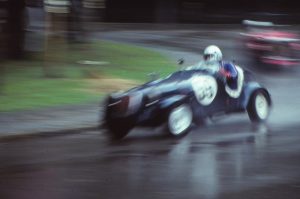
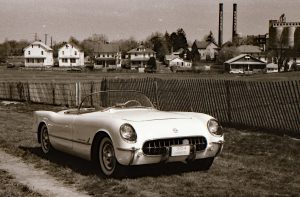
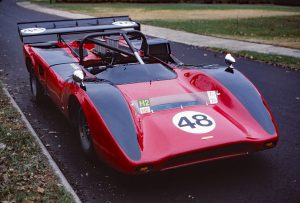
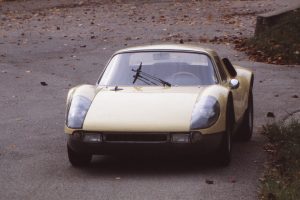
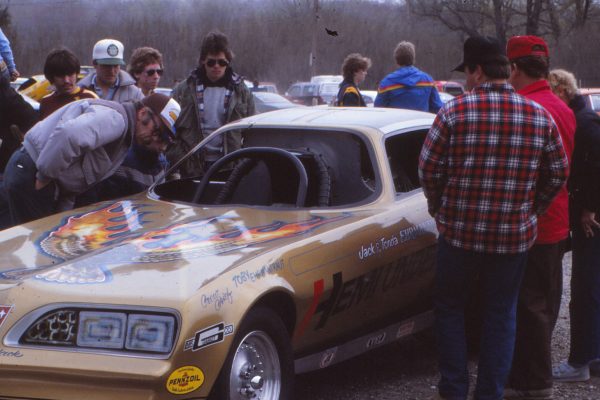

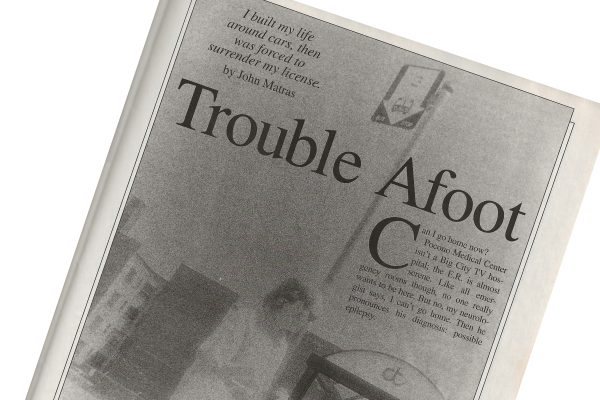
Yes
There are 4 Amc327 ci that were installed at Kenosha
I own 3
Thanks for that. Would that the V8 would have come sooner—-and the world’s most expensive production process been made more efficient. Just think, he says, competition for the Corvette.